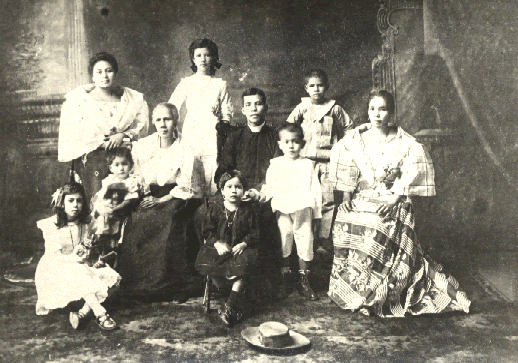
I grew up in the city of Cebu, in Southern Philippines, whose claim to historical fame was that the Portuguese navigator Ferdinand Magellan was killed by Lapulapu in nearby Mactan Island. This happened in 1521, and for the next 333 years, Spain controlled the Philippine archipelago. During the turn of the century the Americans took over as the colonists of the Philippine archipelago. During World War II, the Japanese controlled the country, but somehow despite the assortment of influences, there remained a quaint Spanish colonial flavor in the place. It was something I took for granted while growing up, and only became more interested in where this Spanish flavor came from as a grown woman after my mother and most of her generation had passed on. I’ve had to turn to history books to make the connections between the past and the present.
One of the things I learned was that the Jesuits had a long and rich history in Cebu. I had known that the Jesuits had founded the Ateneo in the 1800s because the Philippine National hero Jose Rizal attended that school. But I was pleasantly surprised to learn that the Jesuits had been in Cebu as early as 1595.
It was the Jesuit superior, Antonio Sedeno himself who founded a house in Cebu. Sedeno was a veteran missionary of 46. Like St. Ignatius, he had been in the military when he was young. He had gone to England as a page of the Duke of Feria when Mary Tudor was queen. On March 13, 1568, he sailed for Florida with a group of Jesuits headed by Juan Bautista de Segura. In 1572, Sedeno was the first Jesuit sent to Mexico, and it was while he was acting Rector of the college there that he was informed he was chosen as superior of the first Philippine Mission. Traveling with three companions, he sailed from Acapulco on the galleon San Martin on March 29, and arrived Manila in July. There Sedeno and his company learned Tagalog. After much hem and hawing as to whether the Manila Jesuits would head the entire Far East or the Philippines, and as to what type of work they would actually do there, the King of Spain sent an order for the Jesuits to establish a Jesuit College where they would teach not only Spanish boys but also mestizos and sons of the ruling class.
Cebu, the site of the first Spanish settlement was not forgotten, and by June 30, 1595 Sedeno himself headed a small group composed of Alonso de Humanes, Mateo Sanchez and a lay brother to Cebu for the purpose of founding a Jesuit house there. The people received them warmly and promptly donated 500 pesos to them, which they used to buy a house near the beach. The city corporation donated adjacent land adjacent for a yard and garden. The trip to Cebu had been on an uncovered sailboat, exposing the Jesuit passengers to the stormy weather for three weeks. Father Sedeno became ill and passed away in Cebu on September 2, 1595. They buried him in the domestic chapel on the ground floor of their first house, but three years later, Father Pedro Chirino transferred Sedeno’s remains to the new Jesuit church.
The Jesuits went on and founded a free primary school that taught Spanish, Visayan, and Chinese students Catholic doctrine, reading, writing, arithmetic, and deportment. Grammar was added upon the Since 1596, the Jesuits had been administering a free primary school teaching Spanish,Visayan, and Chinese students Christian doctrine, reading, writing, arthimetic, and deportment, grammar.
In 1599 the Chinese Christians built a Catholic church in the wealthy Parian district and the church was said to have been decorated with gold and silver. The Bishop of Cebu ordered the Jesuits to administer this church, which they did for a while. This was the Parian Parish church that stood at the intersections of Mabini, Espana, and Zulueta. The Jesuit convent was across the street on Mabini and Zulueta.
When I was small, my mother used to visit the Parian District of Cebu to shop from an old woman who sold chocolate tablets. I used to accompany her and sitting in our car, I used to peer out at the rundown buildings in that area. After World War II, like many other residents, my family moved inland, in the more popular residential areaa of Cebu, away from the crowded and commercial downtown section. The Parian district ceased being fashionable. But when my mother was young, the Parian had been a fashionable place where the rich and powerful people of Cebu lived. My mother and her family had lived in Colon Street, known as the oldest street in the Philippines.
The shop where my mother bought the chocolate tablets was located at the end of Colon on Mabini Street – yes, the same Mabini Street where the Jesuit convent had sat. Now the Jesuit house is a warehouse, but there are vestiges of the old convent. There is a plaque that is inscribed “1730.” And outside is an old gate that has been preserved by the current owners.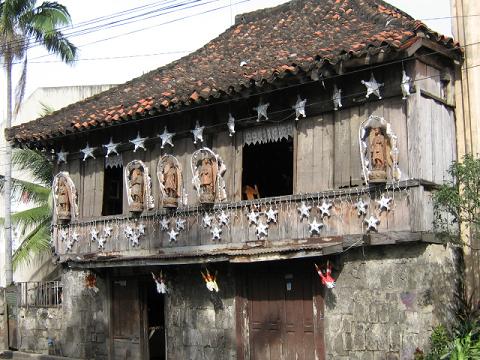
So sometime, if you are in Cebu, near the Cathedral of Cebu and the Santo Nino Basilica, take a walk to the corner of Zulueta and Binacayan, and take a look at the mossy old walls and the find the old gate (on Binacayan Road); and if you ask permission, they’ll let you in and you can see the centenary enormous structural posts and plaque inscribed 1730.
One of the things I learned was that the Jesuits had a long and rich history in Cebu. I had known that the Jesuits had founded the Ateneo in the 1800s because the Philippine National hero Jose Rizal attended that school. But I was pleasantly surprised to learn that the Jesuits had been in Cebu as early as 1595.
It was the Jesuit superior, Antonio Sedeno himself who founded a house in Cebu. Sedeno was a veteran missionary of 46. Like St. Ignatius, he had been in the military when he was young. He had gone to England as a page of the Duke of Feria when Mary Tudor was queen. On March 13, 1568, he sailed for Florida with a group of Jesuits headed by Juan Bautista de Segura. In 1572, Sedeno was the first Jesuit sent to Mexico, and it was while he was acting Rector of the college there that he was informed he was chosen as superior of the first Philippine Mission. Traveling with three companions, he sailed from Acapulco on the galleon San Martin on March 29, and arrived Manila in July. There Sedeno and his company learned Tagalog. After much hem and hawing as to whether the Manila Jesuits would head the entire Far East or the Philippines, and as to what type of work they would actually do there, the King of Spain sent an order for the Jesuits to establish a Jesuit College where they would teach not only Spanish boys but also mestizos and sons of the ruling class.
Cebu, the site of the first Spanish settlement was not forgotten, and by June 30, 1595 Sedeno himself headed a small group composed of Alonso de Humanes, Mateo Sanchez and a lay brother to Cebu for the purpose of founding a Jesuit house there. The people received them warmly and promptly donated 500 pesos to them, which they used to buy a house near the beach. The city corporation donated adjacent land adjacent for a yard and garden. The trip to Cebu had been on an uncovered sailboat, exposing the Jesuit passengers to the stormy weather for three weeks. Father Sedeno became ill and passed away in Cebu on September 2, 1595. They buried him in the domestic chapel on the ground floor of their first house, but three years later, Father Pedro Chirino transferred Sedeno’s remains to the new Jesuit church.
The Jesuits went on and founded a free primary school that taught Spanish, Visayan, and Chinese students Catholic doctrine, reading, writing, arithmetic, and deportment. Grammar was added upon the Since 1596, the Jesuits had been administering a free primary school teaching Spanish,Visayan, and Chinese students Christian doctrine, reading, writing, arthimetic, and deportment, grammar.
In 1599 the Chinese Christians built a Catholic church in the wealthy Parian district and the church was said to have been decorated with gold and silver. The Bishop of Cebu ordered the Jesuits to administer this church, which they did for a while. This was the Parian Parish church that stood at the intersections of Mabini, Espana, and Zulueta. The Jesuit convent was across the street on Mabini and Zulueta.
When I was small, my mother used to visit the Parian District of Cebu to shop from an old woman who sold chocolate tablets. I used to accompany her and sitting in our car, I used to peer out at the rundown buildings in that area. After World War II, like many other residents, my family moved inland, in the more popular residential areaa of Cebu, away from the crowded and commercial downtown section. The Parian district ceased being fashionable. But when my mother was young, the Parian had been a fashionable place where the rich and powerful people of Cebu lived. My mother and her family had lived in Colon Street, known as the oldest street in the Philippines.
The shop where my mother bought the chocolate tablets was located at the end of Colon on Mabini Street – yes, the same Mabini Street where the Jesuit convent had sat. Now the Jesuit house is a warehouse, but there are vestiges of the old convent. There is a plaque that is inscribed “1730.” And outside is an old gate that has been preserved by the current owners.

So sometime, if you are in Cebu, near the Cathedral of Cebu and the Santo Nino Basilica, take a walk to the corner of Zulueta and Binacayan, and take a look at the mossy old walls and the find the old gate (on Binacayan Road); and if you ask permission, they’ll let you in and you can see the centenary enormous structural posts and plaque inscribed 1730.
(Above picture shows the Cuenco Family who lived on Colon, the oldest Street in the Philippines. My mother is the girl standing and holding a doll, on the left side); the other picture is the Val Sandiego house in Parian, Cebu
All for now,
Cecilia Brainard
tags: travel, history, Philippines, Cebu, Parian, Jesuits, Spanish Colonial, Jesuit House
All for now,
Cecilia Brainard
tags: travel, history, Philippines, Cebu, Parian, Jesuits, Spanish Colonial, Jesuit House




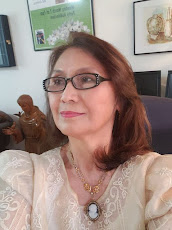

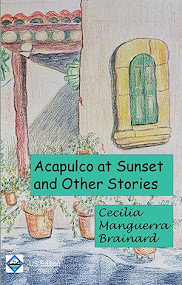



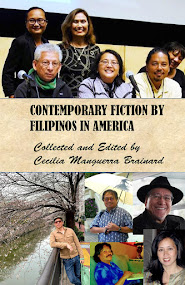
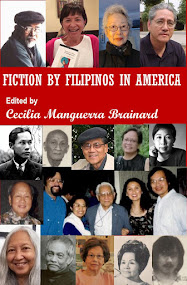



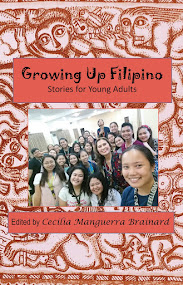






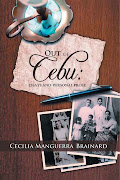



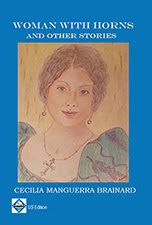

No comments:
Post a Comment